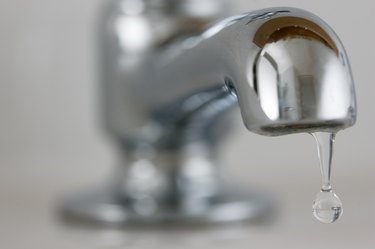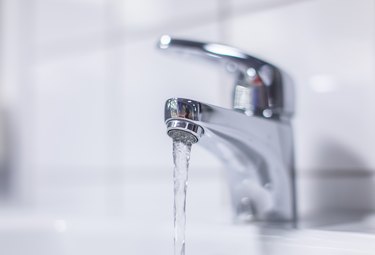Verified Approaches for Addressing Low Water Pressure in Your Home
Verified Approaches for Addressing Low Water Pressure in Your Home
Blog Article
How do you really feel when it comes to 10 Reasons for Low Water Pressure in Your House?

Low tide pressure in your house can be an aggravating issue, impacting everything from bathing to cleaning recipes. If you're experiencing weak water circulation, there are a number of possible reasons and remedies to check out. In this overview, we'll review common factors for low tide stress and sensible steps to attend to the concern successfully.
Intro to Low Water Stress
Low water pressure occurs when the circulation of water from your faucets, showers, and various other fixtures is weak than typical. This can make daily tasks much more tough and less effective. Understanding the sources of low tide pressure is important to finding the ideal option.
Common Reasons For Low Water Pressure
Pipe Obstructions
With time, pipelines can come to be clogged with natural resource, debris, or debris, restricting the flow of water. This is an usual issue in older homes with galvanized steel pipelines.
Deterioration
Deterioration within pipelines can cause leaks and decreased water pressure. Rust build-up can tighten water flow, specifically in maturing plumbing systems.
Faulty Stress Regulators
Stress regulators are in charge of maintaining regular water pressure in your house. If they malfunction, it can cause low tide stress or uneven circulation throughout the house.
Metropolitan Water System Issues
In some cases, the problem exists outside your home. Community water concerns, such as main line leakages or upkeep work, can momentarily minimize water pressure in your location.
Just How to Detect Low Tide Stress
Inspecting Faucets and Fixtures
Beginning by examining the water stress at different taps and components throughout your home. If the concern is isolated to specific locations, it may show local problems.
Evaluating Pipes
Evaluate visible pipes for signs of leakages, corrosion, or obstructions. Focus on any kind of unusual audios, such as knocking or rattling pipelines, which can suggest issues within the plumbing system.
Consulting with a Plumber
If you're not able to pinpoint the root cause of low tide pressure, consider hiring a professional plumber to perform a complete assessment. They can determine underlying problems and suggest proper options.
DIY Solutions to Fix Low Tide Pressure
Cleaning Up Aerators and Showerheads
Mineral deposits can build up in aerators and showerheads, minimizing water flow. Eliminate and cleanse these parts on a regular basis to improve water stress.
Flushing Water Heater
Sediment build-up in the water heater can limit circulation and minimize efficiency. Flushing the storage tank regularly helps eliminate sediment and keep optimal performance.
Checking Stress Regulator
Ensure that the pressure regulator is operating appropriately. Readjusting or changing the regulator can aid bring back correct water stress throughout your home.
Clearing Up Clogs in Pipes
For minor clogs, attempt utilizing a plumbing serpent or chemical drain cleaner to clear obstructions in pipelines. Beware when making use of chemicals and adhere to safety standards.
When to Call a Specialist Plumber
If do it yourself initiatives fail to deal with the issue or if you suspect significant plumbing issues, it's ideal to seek help from an accredited plumber. They have the competence and devices to deal with intricate issues securely and successfully.
Preventive Measures to Maintain Water Stress
Routine Maintenance
Set up regular maintenance for your plumbing system to stop problems such as deterioration, leakages, and obstructions. Dealing with small troubles early can help prevent even more substantial repair work in the future.
Installing a Pressure Booster
Think about mounting a stress booster pump to improve water stress in locations with constantly reduced circulation. This can be particularly valuable for multi-story homes or buildings with high-demand fixtures.
Surveillance Water Use
Be mindful of water use behaviors and prevent overtaxing the plumbing system. Simple changes, such as incredible showers and washing tons, can aid preserve appropriate water stress.
Verdict
Handling low tide stress can be aggravating, yet recognizing the underlying reasons and applying appropriate services can restore optimum flow throughout your home. Whether it's cleaning up aerators, checking pipes, or seeking advice from a plumber, taking positive actions can make certain a stable supply of water for your daily needs.
FOUR WAYS TO FIX LOW WATER PRESSURE NOW
Turning on a shower or faucet only to find the water comes out in a sad, slow drizzle is never a good feeling. How exactly are you supposed to wash a pan or take a quick shower when it takes 10 minutes just to rinse off a little soap? The good news is that when your water pressure is bad, there's always a cause: typically one that can be easily fixed. Here are some of the most common causes of low pressure and what you can do to fix the issue:
DEBRIS AND MINERAL DEPOSIT BUILDUPS
If you notice low water pressure from just one or two of the fixtures in your house, the problem likely has to do with debris buildup. Water is full of minerals and other debris, all of which can accumulate in your pipes and on your fixtures. This can cause a blockage that affects how much water flows through. To fix this, try filling a small plastic bag with white vinegar, and use a rubber band to hang it around your showerhead or faucet. Let the head of the fixture soak for a few hours, and the vinegar should loosen the deposits.
WATER LEAKS
Leaks are another common cause of low water pressure. If water is flowing out of your plumbing through a hole or crack before it can reach your fixture, the pressure coming out of the faucet or showerhead will be lower. A plumbing professional is your best bet for finding and repairing a leak in your water supply pipes.
Leaks are another common cause of low water pressure. If water is flowing out of your plumbing through a hole or crack before it can reach your fixture, the pressure coming out of the faucet or showerhead will be lower. A plumbing professional is your best bet for finding and repairing a leak in your water supply pipes.
FOUR WAYS TO FIX LOW WATER PRESSURE NOW
Turning on a shower or faucet only to find the water comes out in a sad, slow drizzle is never a good feeling. How exactly are you supposed to wash a pan or take a quick shower when it takes 10 minutes just to rinse off a little soap? The good news is that when your water pressure is bad, there's always a cause: typically one that can be easily fixed. Here are some of the most common causes of low pressure and what you can do to fix the issue:
DEBRIS AND MINERAL DEPOSIT BUILDUPS
If you notice low water pressure from just one or two of the fixtures in your house, the problem likely has to do with debris buildup. Water is full of minerals and other debris, all of which can accumulate in your pipes and on your fixtures. This can cause a blockage that affects how much water flows through. To fix this, try filling a small plastic bag with white vinegar, and use a rubber band to hang it around your showerhead or faucet. Let the head of the fixture soak for a few hours, and the vinegar should loosen the deposits.
WATER LEAKS
Leaks are another common cause of low water pressure. If water is flowing out of your plumbing through a hole or crack before it can reach your fixture, the pressure coming out of the faucet or showerhead will be lower. A plumbing professional is your best bet for finding and repairing a leak in your water supply pipes.
Leaks are another common cause of low water pressure. If water is flowing out of your plumbing through a hole or crack before it can reach your fixture, the pressure coming out of the faucet or showerhead will be lower. A plumbing professional is your best bet for finding and repairing a leak in your water supply pipes.
A VALVE ISSUE
If you have low water pressure throughout your home, check your main shut-off valve to make sure it's completely open. You may also want to see if there's a pressure-reducing valve installed. If there is, have a plumber help you adjust the settings to get the pressure you're looking for.
OTHERS USING WATER
Believe it or not, your low water pressure could be caused by your neighbors. If you notice low pressure at certain times of day, it may be because you and the people living next to you have similar schedules - when everyone is showering at the same time, the pressure will be lower in every home. Low pressure throughout the neighborhood may also be caused by an issue with your municipal water supply. If that's the case, call the supplier to see if they're working on the issue.
https://www.rotorooter.com/blog/water-leaking/low-water-pressure-fixes/

I am very taken with and I hope you enjoyed my article. Do you know another individual who is serious about Dealing with Low Water Pressure in Your Home? Feel free to share it. Thank you for taking the time to read it.
Pricing Report this page